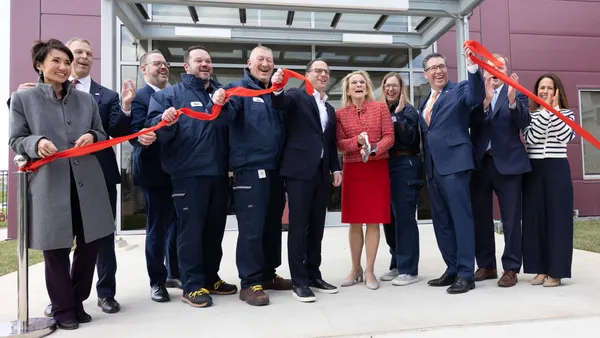Dive Brief:
- John Deere is inking long-term agreements with suppliers and taking other steps to shore up supply of critical components after parts constraints created production backlogs, executives said on a Q3 earnings call Friday.
- The heavy equipment manufacturer is taking a “multipronged approach” to secure supply, according to Director of Investor Relations Brent Norwood. The company is in some cases dual-sourcing components and investing in additional manufacturing capacity for suppliers.
- Deere is also maintaining larger inventories of raw materials to support higher production levels in the future and “offset some of the supply challenges,” according to Norwood. “Our ability to carry these higher production rates into next year is going to require higher inventory levels for us.”
Dive Insight:
Deere is building up its supply of critical components after delays and a monthlong strike last year created production inefficiencies at factories and left the farm equipment maker with an abundance of partially completed machines.
Norwood said in May that “broad-based” supply constraints challenged the company’s ability to procure materials such as castings, wire harnesses, hydraulics, pumps and tires. The company is still holding on to a number of unfinished machines that are waiting on parts before they can be shipped out, though it’s made progress in reducing the backlog.
“Our factories are focused on finishing and shipping the remaining machines in the fourth quarter which will help our progress toward restoring productivity and efficiencies going into next year,” said Rachel Bach, manager of investor communications, on the Q3 call.
Although the company’s been able to procure more of the needed parts, the supply base is “still very fragile and deliveries are still choppy,” Bach said.
Deere has focused on ramping up production in the second half of the year to offset inefficiencies and keep up with demand. The manufacturer will maintain higher production rates over the next two quarters, with executives noting the company’s been able to achieve its highest production line rate of the year.
The higher production levels have come at a cost, however, as Deere has had to expedite freight and take on other overhead costs. Bach said in May that seasonal factories have continued production without the typical shutdown periods, also raising costs.
“Any time we have to touch machines or move them in our factories more than once, it comes at a cost,” said Joshua Jepsen, deputy financial officer, on Friday. “In that respect, 2022 has been a challenge, given the ramp in demand juxtaposed with the lost production in the first quarter and a challenging supply environment. So, we’ve really been chasing production all year as a result.”













